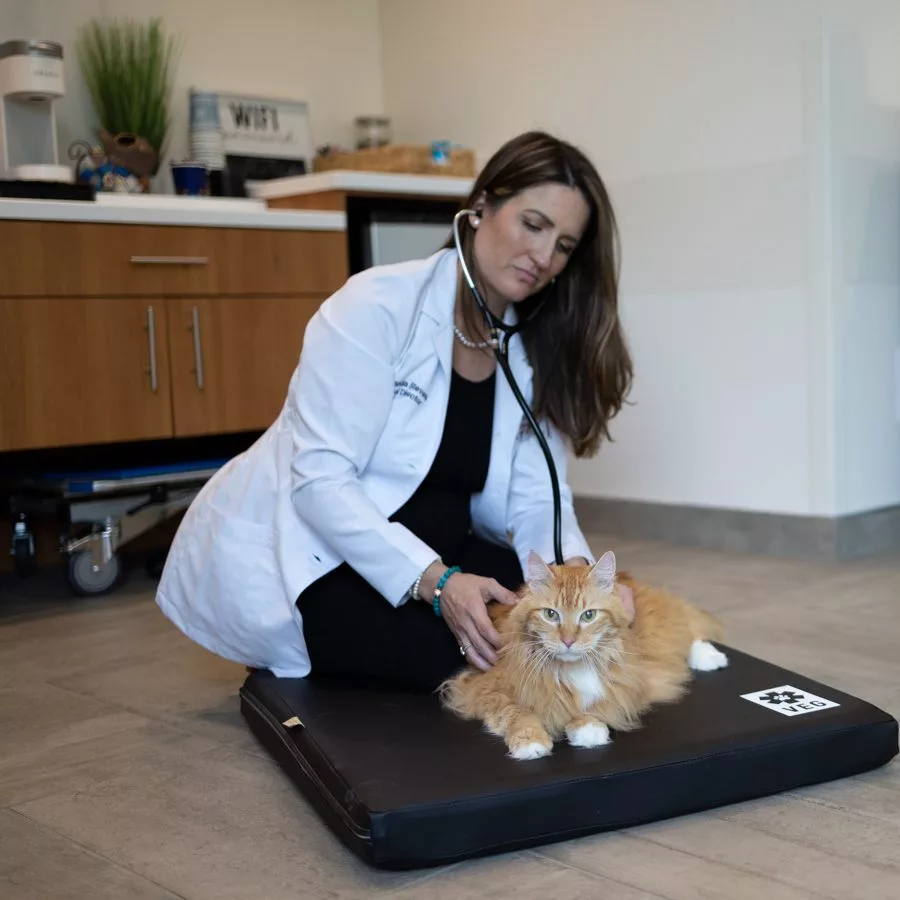
Cat Diabetes: Symptoms, Treatment and Prevention
Dr. Xanth El-Sayed
Call & Speak with a doctor Open 24/7, Even Holidays!
Walk in today for:
Emergencies
Point-of-Care Ultrasound
Urgent Care
X-Rays
Diagnostics + Testing
End-of-Life Care
Surgery
Treatment + Hospitalization
Is your cat at risk of diabetes? Do you know how to recognize this condition before it gets out of hand? What are some of the methods of treating and preventing diabetes in cats, and is it too late for your cat to try some of these options?
Feline diabetes is an unfortunately common problem, and many cat owners regularly face this diagnosis in their pets. While diabetes is life-long and there is not definitive cure, there are some ways in which you can treat the disease and its symptoms for your cat or prevent it altogether. Read through the article below to find out more.
Symptoms
Listed below are the main symptoms of diabetes in cats:
Increased Thirst and Urination
Increased thirst and urination are typically the first symptoms most pet owners notice in their diabetic cats. For owners that use water dishes they need to refill themselves, increased thirst is very obvious, however, for owners who use water fountains or automatically refilling water dishes, increase in thirst can be more difficult to identify. Either way, the need to drink and urinate more will continue or worsen over time. In some cases, cats may even start urinating outside the litterbox. If you notice your cat’ thirst or urination increasing and the problem doesn’t resolve in a couple of days, go to the vet for a checkup and diagnostics.
Increased Appetite
Cats with diabetes will typically have an increased appetite as well, although this symptom may not appear until later on in the disease. Your cat may become almost insatiable and may start eating almost anything it can find as the condition worsens.
Sudden Weight Loss
Sudden weight loss without an explanation means something is wrong with your cat. If your cat is excessively hungry but is also losing a lot of weight very quickly, diabetes may be the cause. However, thyroid problems and some types of cancer can also cause this combination of symptoms, so you’ll need to talk to your vet to find out more.
Lethargy
Lethargy on its own can be a symptom of a variety of feline illnesses and can even just mean your cat is too hot for the day. However, when coupled with other items on this list, lethargy may indicate diabetes.
Treatment
Just like in humans, diabetes in cats is a chronic health condition that will be with your cat for the rest of its life following a diagnosis. After diagnosis, there are a few ways you can combat the effects of diabetes to improve your cat’s overall health and wellness. These steps are listed below:
Insulin
Insulin injections may be required, depending on the severity of your cat’s diabetes. In very early diabetes cases, you may be able to manage your cat’s symptoms through diet and exercise alone; however, your vet will let you know for sure when medication is the better option.
Diet
Changing your cat’s diet to something healthier and monitoring how much it eats can go a long way toward improving the diabetes symptoms. There are many diabetic formulated diets that you can discuss with your veterinarian after diagnosis. Although a dietary change will never remove your cat’s diabetes altogether, it can help them stay healthier and feel better. It also may reduce the risk of blood sugar spikes and drops.
Exercise
Exercise is also crucial in helping your cat stay as healthy as possible even with diabetes. Your cat should receive about 20 minutes of exercise per day, although a little more is even better. Ask your vet for specific recommendations about the right type of exercise for your diabetic cat.
Prevention
Listed below are the main ways to prevent this condition:
Change In Diet
You can work to prevent diabetes in your cat by improving its diet. Put your cat on a healthy food blend and make sure it is fed only the right amount of food per day for its age and breed.
Increased Activity
Help your cat stay active by encouraging them to play. Use interactive toys to play, or provide puzzle toys and treat dispensing toys to help get them up and moving around. If you choose treat dispensing toys, take these treats into consideration as part of their total caloric intake for the day.
No Human Foods
Although it is tempting to share human foods with your pet, it’s better and safer to avoid doing this. Human foods are higher in fat and sugar content than cat foods, and your pet may develop a taste for these types of snacks which could contribute to their risk of diabetes in the future.
Contact VEG if Your Cat Has Diabetes
If you know or suspect your cat has diabetes, it is crucial to work with a trusted and experienced vet for all of its health and wellness needs. Your cat will need to be kept on insulin in most instances, and will also need to go on a special diet. Your vet will let you know which treatment and management options are best for your cat.
If you have an overweight cat who is not yet diabetic, it’s not too late to do something about this problem. Get your cat started on a healthy diet and encourage it to exercise a little bit every day to bring its weight down to a healthy level.
For more information on cat diabetes and how to manage this condition, contact VEG by calling one of our locations. We have locations all over the country that are open 24/7, which means that you never have to wait for your pet to receive proper care and treatment.

